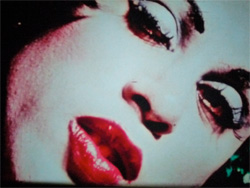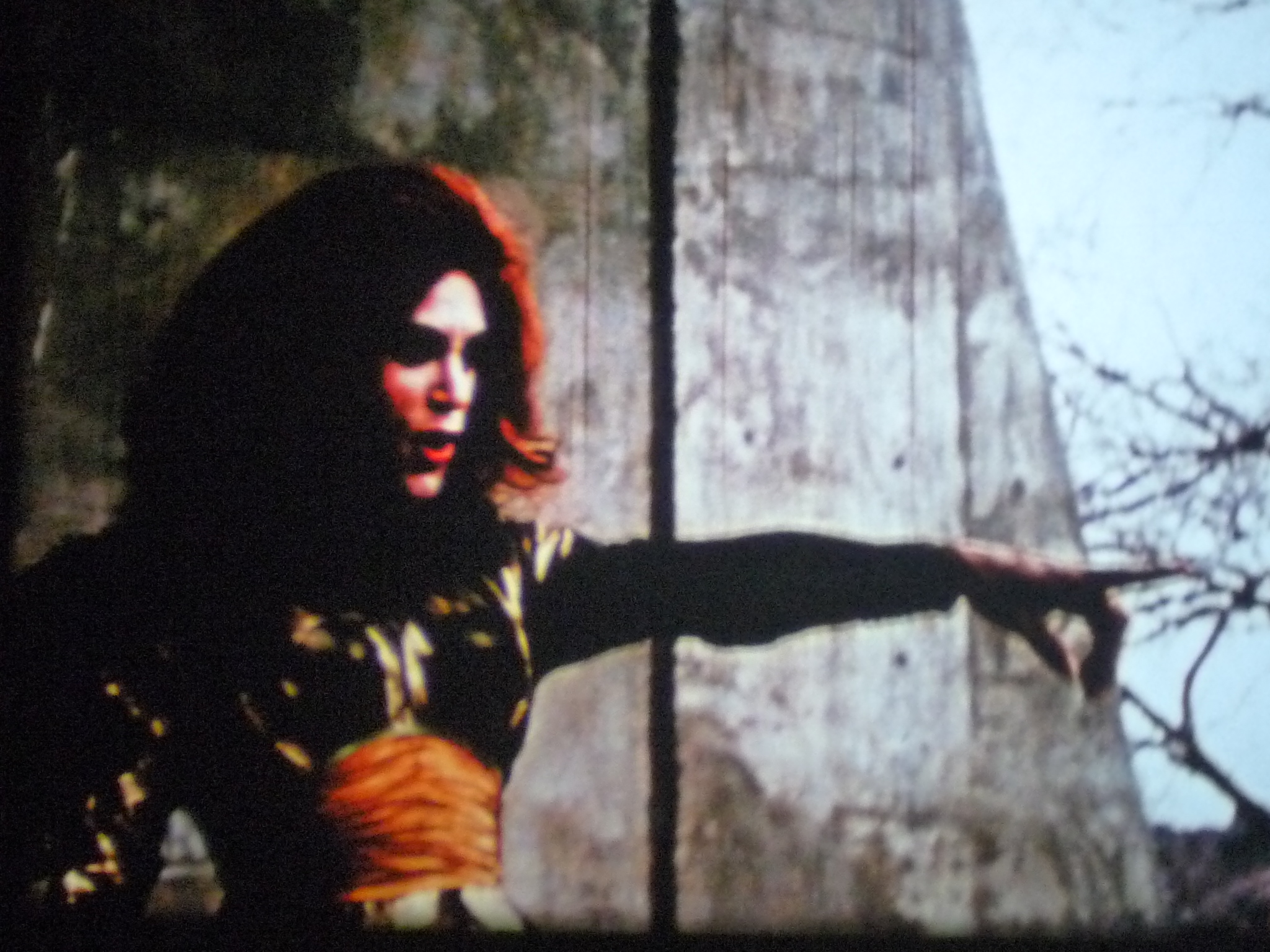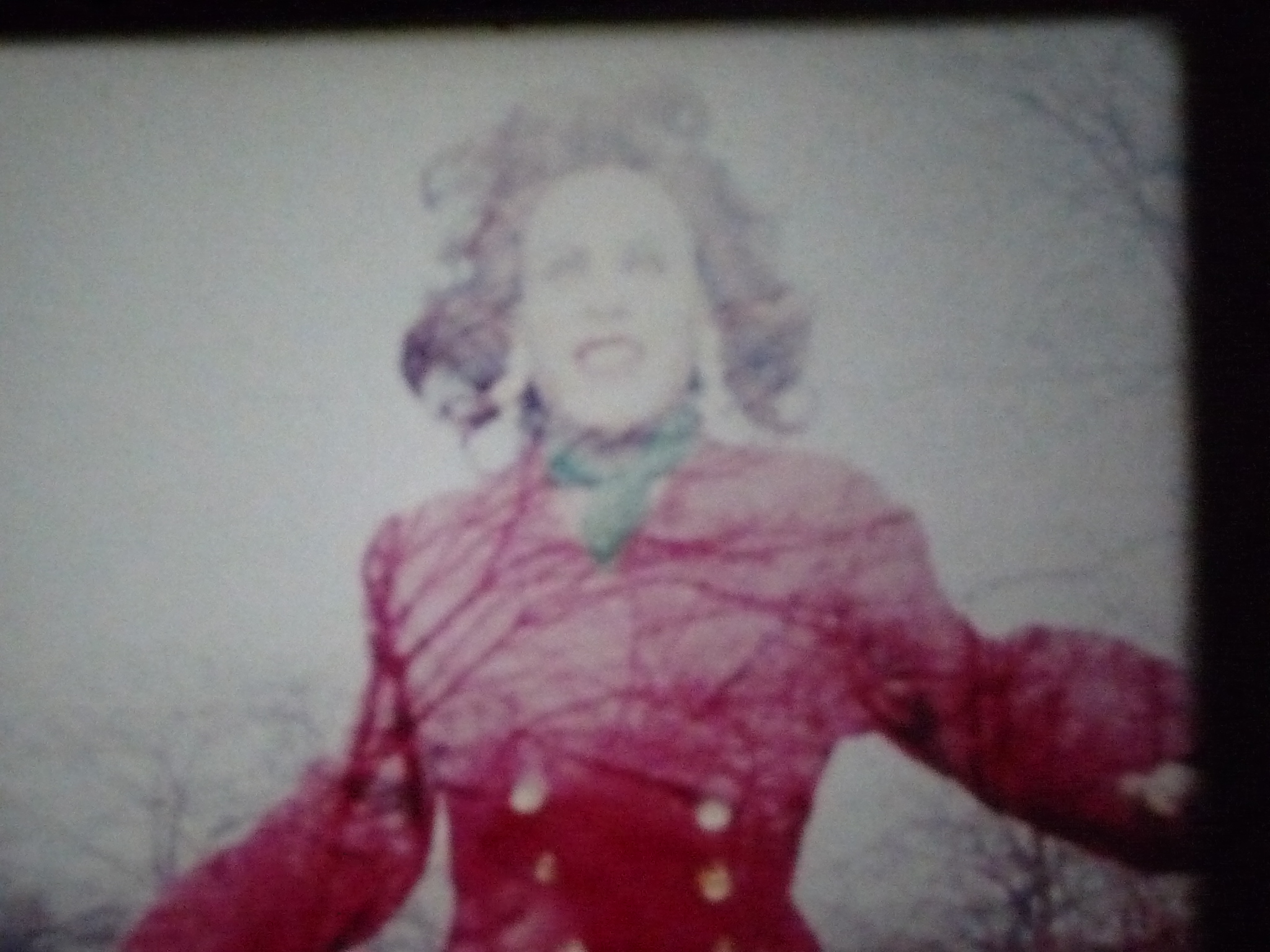Part of Fall 2009
A co-presentation with aluCine Toronto Latin Media Festival

Retired from the art world for decades, the late Jose Rodriguez-Soltero was a significant figure in the New York art community during the mid-1960s and early 1970s. His films were frequently included in Filmmakers’ Cinematheque programs, he was featured in Film Culture and written up in Jonas Mekas’s Movie Journal column, and was the friend, collaborator and occasional roommate of Mario Montez, Charles Ludlam and Jack Smith.
Strangely neglected for too long, Jose Rodriguez Soltero’s Lupe (1966 – 16mm, color, sound – 49:05 ) is an underground classic of the stature of Flaming Creatures, Scorpio Rising, Hold Me While I’m Naked, or The Chelsea Girls. It is ostensibly a biopic of Lupe Velez inspired by Kenneth Anger’s sketch of the Mexican spitfire in Hollywood Babylon and, stylistically, by Von Sternberg’s Marlene Dietrich vehicles. Rodriguez Soltero takes some liberties with the facts and produces a color-saturated, gorgeous dime-store baroque that tells of Lupe’s rise from whoredom to stardom, her fall into fractured romance and suicide, and her ascension into the spirit world. It is consistently inventive and surprising, and wrapped in a dense soundtrack that combines, Elvis, Cuban boleros, Spanish flamenco, The Supremes, and Vivaldi. It features some of the main players of the Ridiculous Theatrical Playhouse (Charles Ludlam plays a keen lesbian seducer and Lola Pashalinsky, Lupe’s maid). Mario Montez never looked better; no wonder this was his favorite film. Whether they know it or not, Pedro Almodovar, Vivienne Dick, and Bruce LaBruce have a godfather in Jose Rodriguez Soltero. (Juan Suarez )
Lupe will be preceded by Jerovi (11 min., 1965), a sexual probe of the Narcissus myth.
Jerovi departs from earlier experimental work by Cocteau, Curtis Harrington, Willard Maas and others, which drew upon the Narcissus myth to explore the filmmakers’ Freudian unconscious and homosexual desire. Rodriguez-Soltero’s film celebrates narcissistic desire and the physical act of self-love. A product of the sexual revolution of the 1960s, Jerovi loves himself without shame, in a lush, colorful, natural setting.
“More artifacts than art, Jerovi and Lupe — two films by José Rodriguez-Soltero preserved by the Warhol Foundation and restored by Anthology Film Archives — are prime examples of the mid-’60s New York underground, queer Latino acid-head division. Rodriguez-Soltero was in his twenties, under the influence of Flaming Creatures and early Warhol, when he made these two exercises in super-saturated Kodachrome II thrift-shop glamour. Jerovi is a silent 10-minute study of a young dude who sheds his form-fitting brocade outfit—but not the red, red rose that he’s clutching—for some passionate al fresco onanism. This “sexual probe of the Narcissus myth,” per the filmmaker, was banned from the 1965 Ann Arbor Film Festival but wound up cited by Jonas Mekas as one the year’s best movies.
Thus encouraged, Rodriguez-Soltero embarked on a follow-up homage to Hollywood’s “Mexican Spitfire,” Lupe Vélez, whose suicide is graphically detailed in Kenneth Anger’s Hollywood Babylon. It was during the nine months that Lupe was in production that Rodriguez-Soltero staged his infamous LBJ at the Bridge Theater on St. Marks Place. Accompanied by the martial beat of America’s No. 1 song, “The Ballad of the Green Berets,” the filmmaker set fire to an American flag. (According to reporter Fred McDarrah, “The impact on the audience was sensational”: The event got a full-page spread in the next week’s Village Voice.)
Lupe is a bit more staid than LBJ, but no less of its moment. A persistent mess set to a mix of schmaltzy Spanish ballads, the Rolling Stones, flamenco, and Vivaldi, it’s essentially generous—first, because it encourages the viewer to appreciate the greatness of other movies, and second, because it provides a vehicle for its star. The most appealing of drag queens, discovered and named by Jack Smith (although he’s billed in Flaming Creatures as Dolores Flores), Mario Montez is poignantly unconvincing as Lupe — tall, sinewy, and big-featured — but no less beautiful for that. He carries the movie on his broad shoulders.” Two queer underground classics, restored.” J. Hoberman, Village Voice, 2008
“Experimental filmmaker Jose Rodriguez-Soltero passed away on May 22, 2009. Jose Rodriguez-Soltero was born in Santurce, Puerto Rico in 1943. He was an undergraduate at the University of Puerto Rico and attended San Francisco State College and the Film Institute at the College of New York. During the 60s, he was the Editor-in-chief of the short-lived film quarterly, MEDIUM and later taught film and video seminars in NYC at Cooper Union College of the Arts and Sterling-Manhattan’s Public Video Access Center. (Note: this background, illustrates the importance of Puerto Rican migration, interest in art/new wave and experimental film, and bridges film and video practice.)
While at the University of Puerto Rico, Rodriguez-Solterto made his first film El Pecado Original in 1964, which he dedicated to Luis Bunuel. Similar to Lupe, music is a key component of this early film. (His use of music is similar to Kenneth Anger’s Scorpio Rising, but RS cast a wider net, including music from the Latin America diaspora.) Rodriguez-Soltero drew upon a range of both low and high brow sources, including Mendelsohn, Charlie Mingus, Bach, David Rose, music from Ophuls “Black Orpheus,” and the musical “Bye, Bye, Birdie.” He cast the film with students from the University of Puerto Rico and sent the film out to festivals, winning the Grand Prize at the 1965 International Suncoast Film Festival in Florida.
Jerovi, his second film, was shot in 1965 in San Francisco. For Jerovi, RS illustrates the erotic side to the myth of Narcissus, marking a significant shift from the introspective and psychoanalytic use of narcissism by previous experimental filmmakers, such as Curtis Harrington, Willard Maas, and others. This Narcissus—Jerovi — comes right out of the evolving sexual revolution of the 1960s, embracing the sexual pleasure of self love without shame or inhibition — this narcissus is clearly liberated and not in the least bit interested in therapy. Like so much of the erotic work that was coming out of the underground at this time — i.e. Flaming Creatures and Scorpio Rising, Jerovi was censored. Along with Naomi Levine’s Jaremelu, Jerovi was rejected by the 1965 Ann Arbor film festival because of its perceived “pornography.” Filmmaker Gregory Markopoulos wrote in his notes on the festival that “a part of the selection committee ran Jerovi and they were visibly shaken.”
Before discussing Lupe, I would like to briefly note RS’s post-Lupe filmmaking, which illustrates his interest in a radical political cinema coming out of Latin American culture and politics. In 1968, RS made the double screen Dialogue with Che. Dedicated to Berthold Brecht and very much a film influenced by Brechtian techniques, the film features actors from the NY Latin American theatrical scene, including Venezuelan actor, producer, dancer Rolando Pena who plays the title role of Che. The film is a meditation on the death of Che Guevara and a critique of the Hollywood bio-pic Che’ starring Omar Sharif that came out at that time. Rodriguez-Soltero shifted to video and continued to produce political work in the 1970s, particularly of Puerto Rican political actions in NYC. Clearly, his Puerto Rican upbringing and identification with the Latin American diaspora influenced his aesthetics, choice of music and sensibility — I would argue that this would include his portrait of the Mexican actress Lupe Velez.
Although influenced by Anger’s campy, tabloid reporting in the book Hollywood Babylon, in his version of Lupe, RS and his star Mario Montez do not center their focus on the sordid death of Lupe Velez. Unlike its sister film made at the time — Warhol’s Lupe starring Edie Sedgwick which does focus on the sad, lonely, sordid end of Lupe and seemingly Sedgwick herself — Rodriguez-Soltero and Montez celebrate the successes and tragedies in the life of Lupe. She experiences, chooses a life of excess and in her death, ascends body and soul to a saintly, inspirational place for her admirers—in this case two Puerto Ricans. Besides Anger, the other major influence upon the film, as cited by RS, are the films of von Sternberg starring Marlene Dietrich. Along with Montez, the film stars Charles Ludlam and other actors from the Theatre of the Ridiculous with costumes by Montez Creations. Unlike Warhol’s version, this Lupe is sumptuous — and the style is a collage of the energy in theatre and film at the time and emblematizes the excesses in Lupe’s life. For his approach to sound, camera and editing, RS draws upon Sternberg and experimental and new wave film — he veers between the camp theatrics of the Ridiculous and the Brechtian. There is an exuberant explosion of color, amazing superimpositions shot in the camera, and lavishness in Montez’s costumes and makeup — much like the energy in the work of Jack Smith, Ron Rice’s experimental film Chumlum and the Theatre of the Ridiculous. Lupe illustrates the energy and collaboration between various NYC avant-garde worlds with wide ranging interests in popular and classical music, Hollywood gossip, Latin American culture, Catholicism, experimental and popular theatre, television, and art and underground cinema.” Ronald Gregg, June 2009







